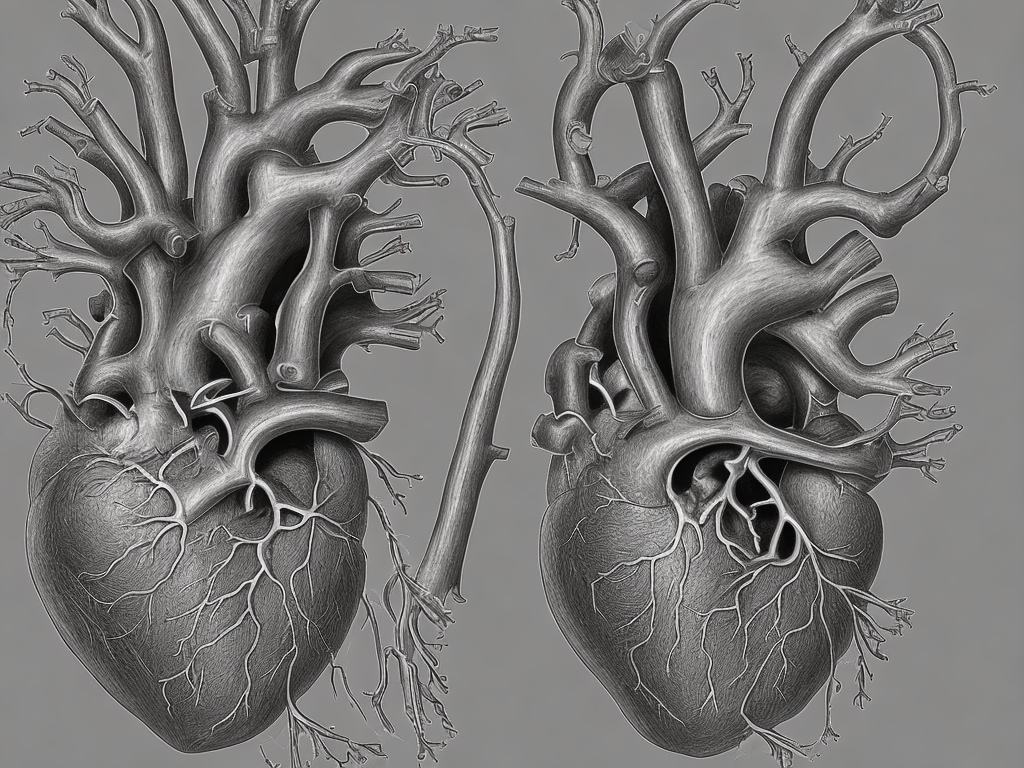
Arteries and veins are two important components of the circulatory system that is responsible for the transport of nutrients, oxygen, and other essential molecules throughout the body. Both arteries and veins play vital roles in the circulation of blood but differ in structure, function, and overall purpose. Understanding the difference between arteries and veins is important as it helps us to comprehend the working mechanisms of the circulatory system.
Structure:
Arteries and veins are different in their structural components. Arteries are thick-walled, muscular, and elastic blood vessels that carry oxygen-rich blood from the heart to different parts of the body. The muscular walls in the arteries help in pumping the blood to different parts of the body, maintaining the blood pressure, and regulating blood flow. The walls of the arteries consist of three layers, including the inner layer of endothelium, the middle layer of smooth muscles and the outer layer of connective tissue.
In contrast, veins are thinner-walled vessels that carry deoxygenated blood from different parts of the body towards the heart. Veins have a relatively lower blood pressure as compared to arteries. The walls of the veins are also made up of three layers, including an inner layer of endothelium, a middle layer of smooth muscles, and an outer layer of connective tissue. They also contain valves that prevent blood backflow, unlike arteries. They help in the smooth movement of blood towards the heart.
Function:
Arteries and veins differ in their functions. Arteries have a vital role in carrying oxygen-rich blood to different parts of the body. The blood carried by arteries is under high pressure and moves away from the heart. The muscular and elastic walls of the arteries help in regulating blood pressure and maintaining blood flow to different organs. Some of the common arteries in the human body include the aorta, femoral artery, and coronary arteries.
In contrast, veins carry deoxygenated blood back to the heart from different parts of the body. The blood carried by veins is under low pressure and moves towards the heart. The valves in the veins help prevent the backflow of blood and maintain the smooth flow of blood towards the heart. Venous blood flows through different veins, such as the vena cava, femoral veins, and renal veins.
Color:
Another distinguishing factor between arteries and veins is their color. Arteries are generally red in color due to the presence of oxygen-rich blood. The bright red color is a result of the interaction between the oxygen and hemoglobin molecules present in the blood. It is easy to identify an artery during surgery due to its bright red color.
On the other hand, veins are usually bluish or purplish in color when viewed through the skin. This is because they carry deoxygenated blood and have a relatively lower oxygen content. Additionally, the skin absorbs the blue and purple colors and makes veins appear this color.
Pulse:
Differences also exist in the pulse of arteries and veins. Arteries have a strong and regular pulse, which can be felt in different parts of the body, such as the neck, wrist, and groin. The pulse is due to the flow of blood under high pressure and the elastic and muscular walls of the arteries. The force of this pulse is known as systolic pressure.
In contrast, veins do not have a regular pulse. Although they contain some blood pressure, it is relatively lower, and the blood flow is smooth and constant. Unlike arteries, the blood pressure in veins is relatively constant, and they expand easily to accommodate an increase in blood volume that may occur from time to time.
In conclusion, differences exist between arteries and veins in terms of their structure, function, color, pulse, and other factors. Arteries carry oxygen-rich blood under high pressure from the heart to different parts of the body, while veins carry deoxygenated blood from different parts of the body towards the heart. Understanding the difference between these two blood vessels is crucial in comprehending the working mechanisms of the circulatory system and can have important clinical implications in the diagnosis and treatment of cardiovascular diseases.
 Self-Instruct
Self-Instruct